Additional notes (click to expand)
Medicinal
Traditionally leaves or roots used for warts, fistulae, cancerous sores, poor appetite, liver complaints, skin conditions including acne and in homeopathy.
Plants for a Future at www.plantsforafuture.org.uk www.plantsforafuture.org.uk
Other use
Blue dye from dried plant has been used as an indigo subsitute, yellow dye when mixed with alum.
Plants for a Future at www.plantsforafuture.org.uk www.plantsforafuture.org.uk
Geographical distribution
- Africa, Northern Africa, Algeria
- Africa, Northern Africa, Morocco
- Africa, Northern Africa, Tunisia
- Asia-Temperate, Western Asia, Lebanon-Syria
- Asia-Temperate, Western Asia, Turkey
- Europe, Eastern Europe, Baltic States
- Europe, Eastern Europe, Ukraine
- Europe, Middle Europe, Austria
- Europe, Middle Europe, Belgium
- Europe, Middle Europe, Germany
- Europe, Middle Europe, Hungary
- Europe, Middle Europe, Netherlands
- Europe, Middle Europe, Poland
- Europe, Middle Europe, Switzerland
- Europe, Northern Europe, Great Britain
- Europe, Northern Europe, Ireland
- Europe, Southeastern Europe, Albania
- Europe, Southeastern Europe, Bulgaria
- Europe, Southeastern Europe, Greece
- Europe, Southeastern Europe, Italy
- Europe, Southeastern Europe, Romania
- Europe, Southeastern Europe, Yugoslavia
- Europe, Southwestern Europe, France
- Europe, Southwestern Europe, Portugal
- Europe, Southwestern Europe, Spain
Dipsacus fullonum L.
Family: CAPRIFOLIACEAEGenus: Dipsacus
Species: fullonum L.
Common names: Teasel
Distribution summary: Europe, N. Africa, S.W. Asia
Habit: Biennial
Hardiness: H5 - Hardy; cold winter
Habitat: Woods, stream banks, rough pasture, clay soils
Garden status: Currently grown
Garden location: Europe & Mediterranean (E), Mulberry Tree bed (H), Plane tree bed (P)
Flowering months: July, August
Reason for growing: Medicinal, other use
.JPG)
.JPG)
.JPG)
.JPG)
.JPG)
.JPG)
.JPG)
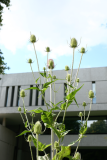
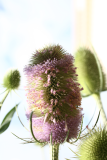
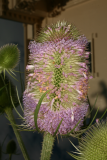
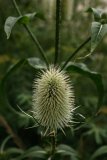
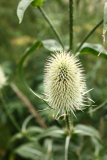
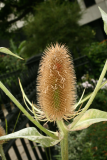
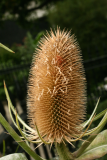
.JPG)
.JPG)